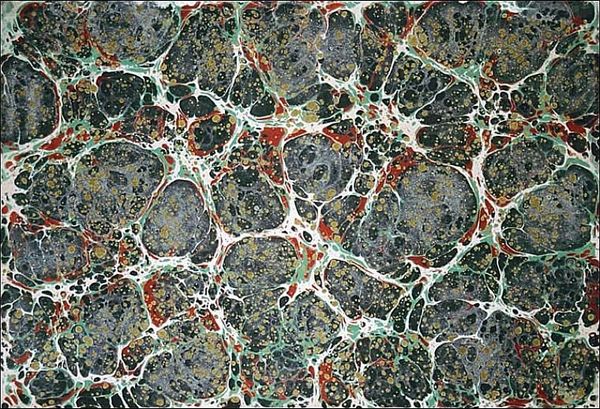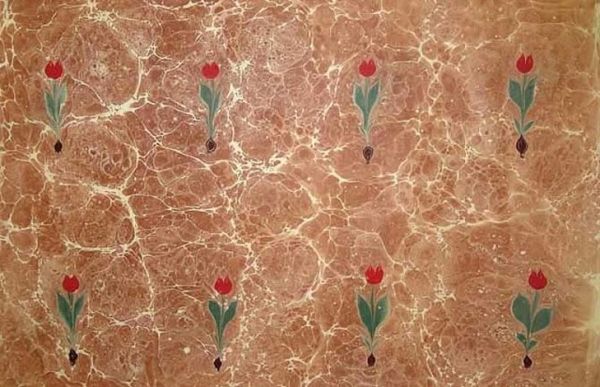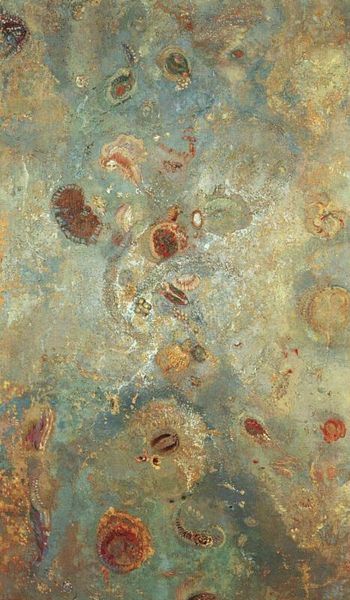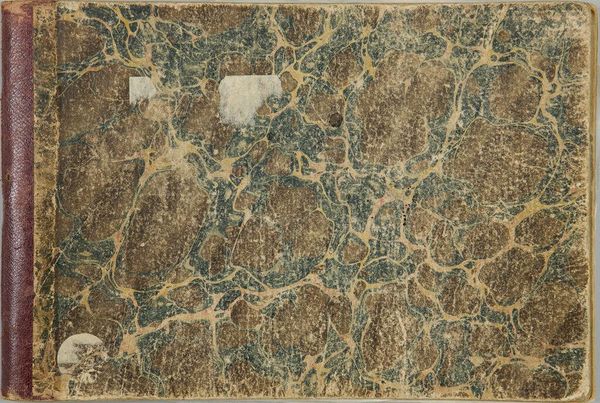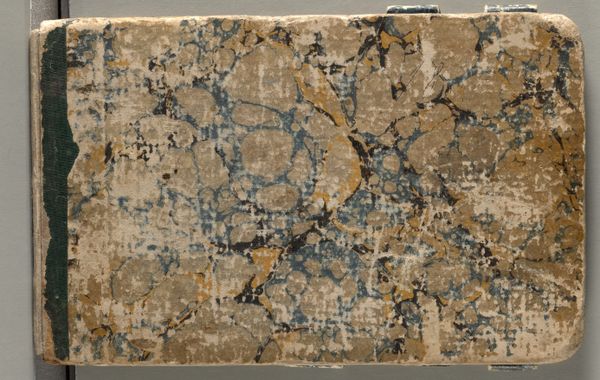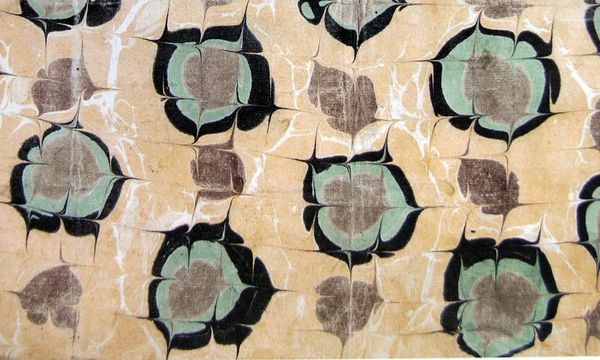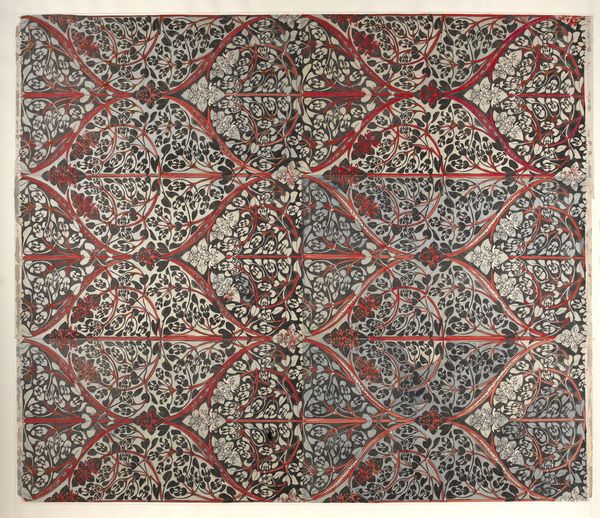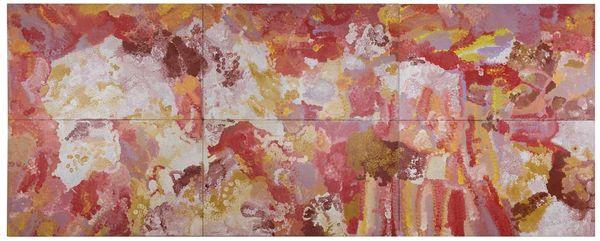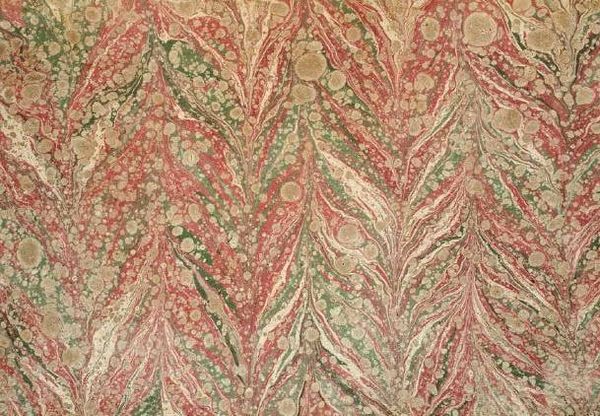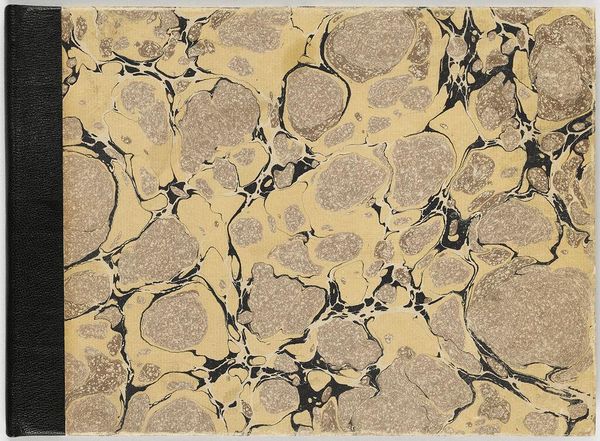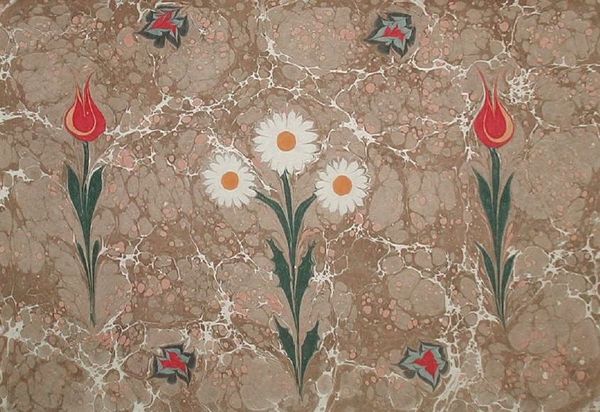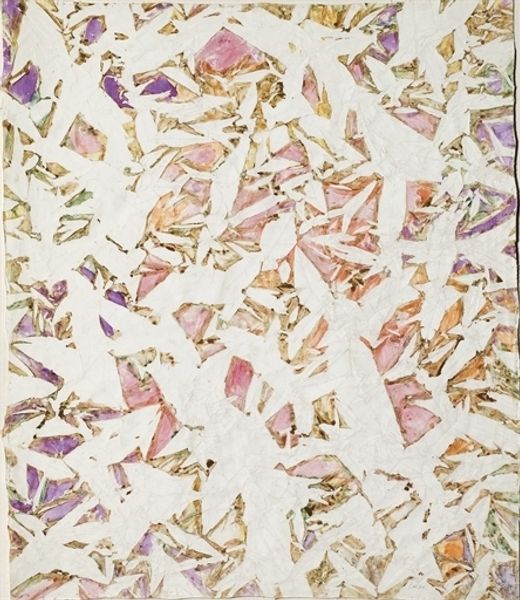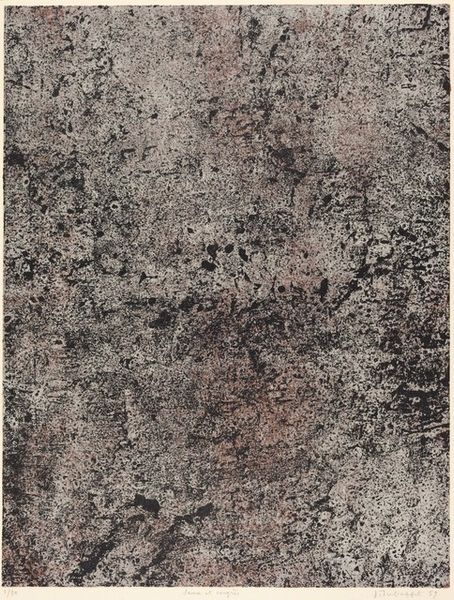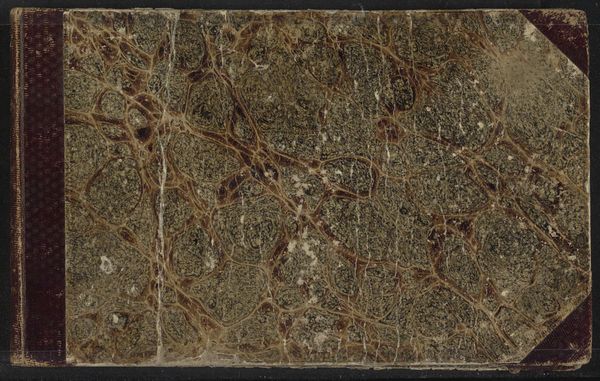
mixed-media, watercolor, ink
#
mixed-media
#
organic
#
pattern
#
watercolor
#
ink
#
abstract pattern
#
pink
#
organic pattern
#
abstraction
#
islamic-art
#
decorative-art
Copyright: Public domain
Editor: This piece is titled "Ebru (attributed)" and it seems to be a mixed media work incorporating watercolor and ink, possibly created by Hatip Mehmed Efendi. I am drawn to the almost dream-like quality of the swirling patterns, how the flora appears and disappears into this chaotic texture. What can you tell me about it? Curator: Well, Ebru, or paper marbling, holds a fascinating place in the history of Islamic art and bookmaking. The attribution to Hatip Mehmed Efendi suggests a connection to a tradition deeply embedded in Ottoman cultural practices. How do you see the role of the floral motifs against the background, thinking about social and cultural messaging of art in that time? Editor: They seem intentionally scattered, and not naturally formed; almost a way of imposing order – stylized flowers, at that – onto something naturally chaotic. It strikes me that it could be a reminder of cultivation? Curator: Precisely. Considering its decorative purpose – maybe it was made as bookbinding or calligraphy backing – we should ask how its use affected its social position. The "highness" or "lowness" of this type of work... Who did it serve? It being considered “decorative” can alter one’s read. How are our perceptions of these "decorative arts" shaped by institutions like museums? Does that affect the value society places on such skills? Editor: I see, so considering its role affects how we approach it. I had only been looking at the visuals! Now I’m also thinking about who used this kind of marbled paper. Curator: Exactly! Reflecting on this, perhaps thinking of art’s social life broadens how one might "appreciate" a piece of ebru from centuries ago. It also reminds us how complex even seemingly straightforward images truly are.
Comments
No comments
Be the first to comment and join the conversation on the ultimate creative platform.
